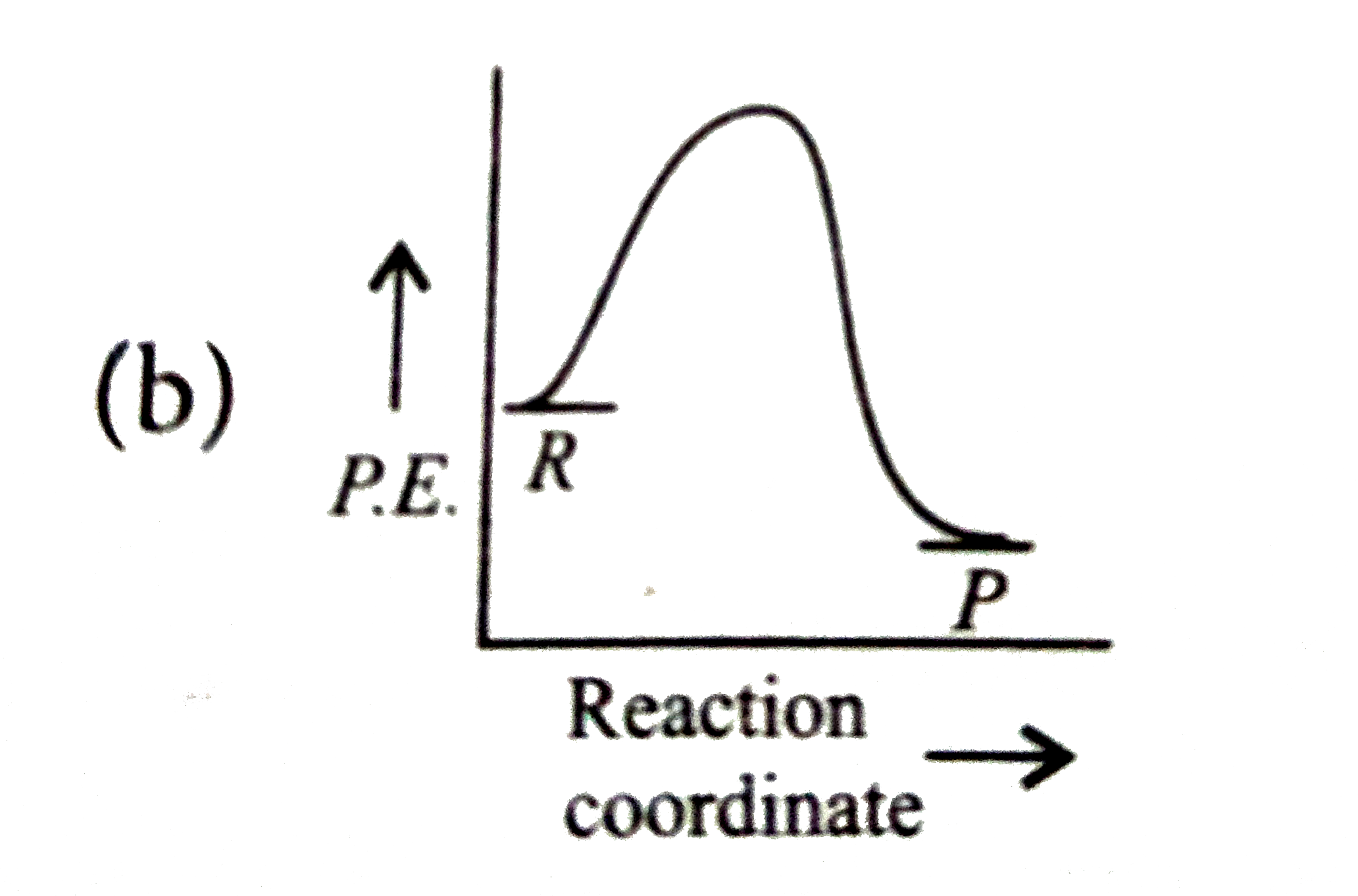Consider an endothermic reaction X→Y with the activation energies Eb and Ef for the backward and forward reaction, respectively. In general
Eb<Ef
Eb>Ef
Eb=Er
There is no definite relation between EbandEf
The correct Answer is:A
To solve the problem regarding the activation energies of an endothermic reaction X⇌Y, we need to analyze the relationship between the activation energies for the forward and backward reactions.
1. Understanding Activation Energy:
- The activation energy (Ef) for the forward reaction X→Y is the energy required to convert reactants into products.
- The activation energy (Eb) for the backward reaction Y→X is the energy required to convert products back into reactants.
2. Endothermic Reaction:
- In an endothermic reaction, the enthalpy change (ΔH) is positive. This means that the energy of the products (Y) is higher than that of the reactants (X).
- Mathematically, this can be represented as:
ΔH=Ef−Eb>0
- This indicates that Ef>Eb.
3. Relating Activation Energies:
- From the equation ΔH=Ef−Eb, we can rearrange it to find the relationship between Ef and Eb:
Ef=Eb+ΔH
- Since ΔH is positive for an endothermic reaction, it follows that:
Ef>Eb
4. Conclusion:
- Therefore, for an endothermic reaction, the activation energy of the forward reaction (Ef) is greater than the activation energy of the backward reaction (Eb).
- This leads us to conclude that the correct option is:
Eb<Ef
Final Answer:
The correct relationship is Eb<Ef.
---
- The activation energy (Ef) for the forward reaction X→Y is the energy required to convert reactants into products.
- The activation energy (Eb) for the backward reaction Y→X is the energy required to convert products back into reactants.
- In an endothermic reaction, the enthalpy change (ΔH) is positive. This means that the energy of the products (Y) is higher than that of the reactants (X).
- Mathematically, this can be represented as:
ΔH=Ef−Eb>0
- This indicates that Ef>Eb.
- From the equation ΔH=Ef−Eb, we can rearrange it to find the relationship between Ef and Eb:
Ef=Eb+ΔH
- Since ΔH is positive for an endothermic reaction, it follows that:
Ef>Eb
- Therefore, for an endothermic reaction, the activation energy of the forward reaction (Ef) is greater than the activation energy of the backward reaction (Eb).
- This leads us to conclude that the correct option is:
Eb<Ef
The correct relationship is Eb<Ef.
Topper's Solved these Questions
- CHEMICAL KINETICS BOOK - VMC MODULES ENGLISHCHAPTER - CHEMICAL KINETICS EXERCISE - JEE Advanced (Archive)
52 Videos
- CHEMICAL KINETICS BOOK - VMC MODULES ENGLISHCHAPTER - CHEMICAL KINETICS EXERCISE - Level-2 ( Numerical Value Type for JEE Main )
15 Videos
- CHEMICAL EQUILIBRIUMBOOK - VMC MODULES ENGLISHCHAPTER - CHEMICAL EQUILIBRIUMEXERCISE - IN-CHAPTER EXERCISE - G
10 Videos
- CHEMICAL THERMODYNAMICS BOOK - VMC MODULES ENGLISHCHAPTER - CHEMICAL THERMODYNAMICS EXERCISE - IN - CHAPTER EXERCISE - L
10 Videos
Similar Questions
A colliison between reactant molecules must occur with a certain minimum energy before it is effective in yielding Product molecules. This minimum energy is called activation energy Ea Large the value of activation energy, smaller the value of rate constant k. Larger is the value of activation energy, greater is the effect of temperature rise on rate constant k.

Ef= Activation energy of forward reaction
Eb= Activation energy of backward reaction
ΔH=Ef−Eb
Ef= threshold energy
In a hypothetical reaction A→B, the activation energies for the forward and backward reactions are 15 and 9kJmol−1, respectively. The potential energy of A is 10kJmol−1. Which of the following is wrong?
View SolutionWhen the activation energies of the forward and backward reactions are equal, then :
View Solution
Knowledge Check
An endothermic reaction with high activation energy for the forward reaction is given by the diagram
A B
B C
C D
D
In a hypothetical reaction X→Y, the activation energy for the forward backward reactions are 15 and 9 kJ mol−1 respectively. The potential energy of X is 10 kJ mol−1. Which of the following statement is/are correct?
(i) The threshold energy of the reaction is 25 kJ mol−1
(ii) The potential energy of Y is 16 kJ mol−1
(iii) Heat of reaction is 6 kJ mol−1
The reaction is endothermic.AOnly (i)BOnly (i) and (ii)COnly (ii) and (iii)DAll are correct
Draw a representative reaction curve for an exothermic reaction and (i) label the activation energies for the forward and reverse reaction (ii) enthalpy for the forward and reverse reactions. How will the curve change with the addition of a catalyst ?
View SolutionGiven that the normal energy of the reactant and produce are 40J and 20 J respectively and threshold energy of the uncatalysed reaction is 120 J.If the rate of uncatalysed reaction at 400 K becomes equal to the rate of catalysed reaction at 300 K, then what will be the activation energy of the catalysed forward and backward reactions respectively ?
View SolutionA reaction having equal energies of activation for forward and reverse reactions has
View SolutionA reaction having equal energies of activation for forward and reverse reactions has
View SolutionIf activation energy, Ea of the reaction is equal to RT then
View SolutionDraw the potential energy diagram for an exothermic reaction. Explain the terms:
activation energy of backward reaction
View Solution
